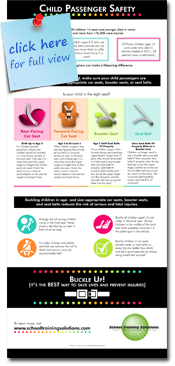
STS is a FL Resource for Training
With an active and destructive Hurricane Season behind us, it’s important to focus on rebuilding and getting things back to normal.
STS is proud to be a resource for school bus driver and school employee training in FL.
We have online options for inservice and professional development training that builds skills and employee confidence.
Consider This: Our online training has been used as a basis for pay during school closures because we can accurately and easily show that employees are working a predetermined amount of time.
If you would like more information or can help in any way, please let us know.
Posted in
Blog on October 5th, 2017.
No Comments.
Join NAPT for the 43rd Annual Conference in Columbus, Ohio, November 4th – 7th

Sports Illustrated has acknowledged Roger Crawford as “one of the most accomplished physically challenged athletes in the world.” In recognition of his extraordinary athletic achievements, he was the recipient of the prestigious ITA Achievement Award, presented by the International Tennis Hall of Fame.
After realizing tremendous success on Center Court, as a Division 1 athlete he took his talents to Center Stage and became a motivational speaker. Roger positively influences audiences worldwide, eloquently sharing the principles he has lived—adaptability, possibility thinking, and eliminating self-imposed obstacles. His remarkable life story is a powerful example that “Challenges are inevitable, defeat is optional!”
Roger Crawford is one of MANY keynote speakers, thought leaders, and industry experts that are participating at this year’s conference.
Discover new ideas!
Posted in
Blog on October 4th, 2017.
No Comments.
Join NAPT for the 43rd Annual Conference in Columbus, Ohio, November 4th – 7th

Members of NAPT are eligible to take as many of the Professional Development Series (PDS) courses offered at the Summit as can fit into your schedule (pending availability). Courses are free of charge to members registered for the Summit! Professional Development Series Courses count towards various levels of NAPT Certification.
In addition to the vast array of training courses and inspiring general sessions, the conference features in-depth workshops with diverse topics and engaging speakers.
Discover new ideas!
Posted in
Blog on September 27th, 2017.
No Comments.
Join NAPT for the 43rd Annual Conference in Columbus, Ohio, November 4th – 7th

An inspirational educator and author, Stacey Bess speaks on the importance of service, mentorship and leadership, and overcoming adversity. Drawing on her fascinating personal story—teaching homeless children in a small shed known as The School with No Name—she offers powerful insights and lessons that audiences yearning to make a difference can apply to their community or organization.
Stacey Bess is one of MANY keynote speakers, thought leaders, and industry experts that are participating at this year’s conference.
Discover new ideas!
Posted in
Blog on September 20th, 2017.
No Comments.
Did you know that every 34 seconds a child under the age of 13 is involved in a car crash?
 September 17-23 is National Child Passenger Safety Week. Sponsored by the U.S. Department of Transportation’s National Highway Traffic Safety Administration, this week is dedicated to making sure all parents and caregivers are properly securing children in the correct car restraints for their ages and size. Car seats, booster seats, and seat belts offer the best protection for children in crashes and work best when used correctly. Consider the following statistics:
September 17-23 is National Child Passenger Safety Week. Sponsored by the U.S. Department of Transportation’s National Highway Traffic Safety Administration, this week is dedicated to making sure all parents and caregivers are properly securing children in the correct car restraints for their ages and size. Car seats, booster seats, and seat belts offer the best protection for children in crashes and work best when used correctly. Consider the following statistics:
|
•
|
Motor vehicle crashes are the leading killer of children ages 1-13.
|
|
•
|
Car seats reduce the risk of fatal injury by 71% for infants and 54% for toddlers.
|
|
•
|
In 2012, over 1/3 of child passengers killed in car crashes weren’t properly restrained.
|
School Training Solutions urges you to help ensure children arrive safe and alive by following the National Highway Safety Administration’s car seat recommendations for your child’s age and size. Car seat safety is critical to protecting our children. View our infographic for more information.
Posted in
Blog on September 19th, 2017.
No Comments.





